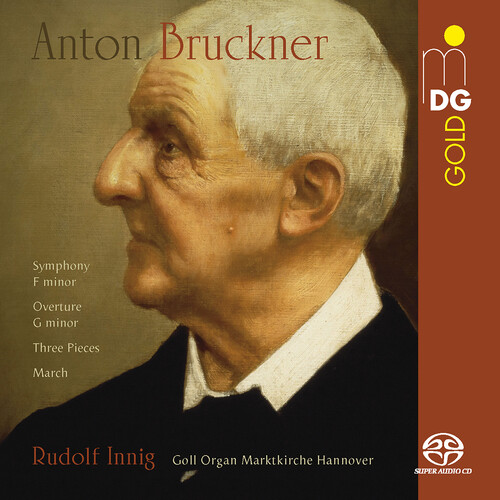Show results for
Deals
- 4K Ultra HD Sale
- Action Sale
- Alternative Rock Sale
- Anime sale
- Award Winners Sale
- Bear Family Sale
- Blu ray Sale
- Blues on Sale
- British Sale
- Classical Music Sale
- Comedy Music Sale
- Comedy Sale
- Country Sale
- Criterion Sale
- Electronic Music sale
- Fantasy Film and TV
- Folk Music Sale
- Hard Rock and Metal Sale
- Horror Sci fi Sale
- Jazz Sale
- Kids and Family Music sale
- Kids and Family Sale
- Metal Sale
- Music Video Sale
- Musicals on Sale
- Mystery Sale
- Naxos Label Sale
- Page to Screen Sale
- Paramount Sale
- Pop and Power Pop
- Rap and Hip Hop Sale
- Reggae Sale
- Rock and Pop Sale
- Rock Legends
- Soul Music Sale
- TV Sale
- TV Sale
- Vinyl on Sale
- War Films and Westerns on Sale

Symphony in F Minor
- (Hybrid SACD)
- Format: SACD
- Release Date: 9/4/2020

Symphony in F Minor
- (Hybrid SACD)
- Format: SACD
- Release Date: 9/4/2020
- Label: MDG
- UPC: 760623217468
- Item #: 2313573X
- Genre: Classical
- Release Date: 9/4/2020

Product Notes
Throughout his life, Anton Bruckner was initially highly regarded as an organist. Rudolf Innig demonstrates with a spectacular listening experiment how much the great symphonic composer was also influenced by "his" instrument: Innig transferred early orchestral works by Bruckner to the organ with loving attention to detail. The result: astounding. And equally good. Bruckner was 39 years old when he completed his two-year composition course with Otto Kitzler, ten years younger than him, with some orchestral pieces and a full symphony. The works already show Bruckner's preference for irregular periods, as he also used them in his organ improvisations, and his preference for sequencing rather than complex motivic processing, and the great dynamic developments. Thus the "Three Orchestral Pieces", which use motifs from Beethoven's piano sonatas, among other things, are given the typical Bruckner tone; with a grand gesture, Bruckner avoids the so obvious stylistic copy of the classical model. Extended organ points, also and especially in the G minor overture, do the rest, and in Innig's organ adaptation, the journeyman pieces acquire an astonishingly convincing plausibility. Rudolf Innig chose the Goll organ in the Marktkirche in Hanover for his Bruckner project. The sound of the large four-manual instrument is perfectly adapted to the needs of the 19th century.

